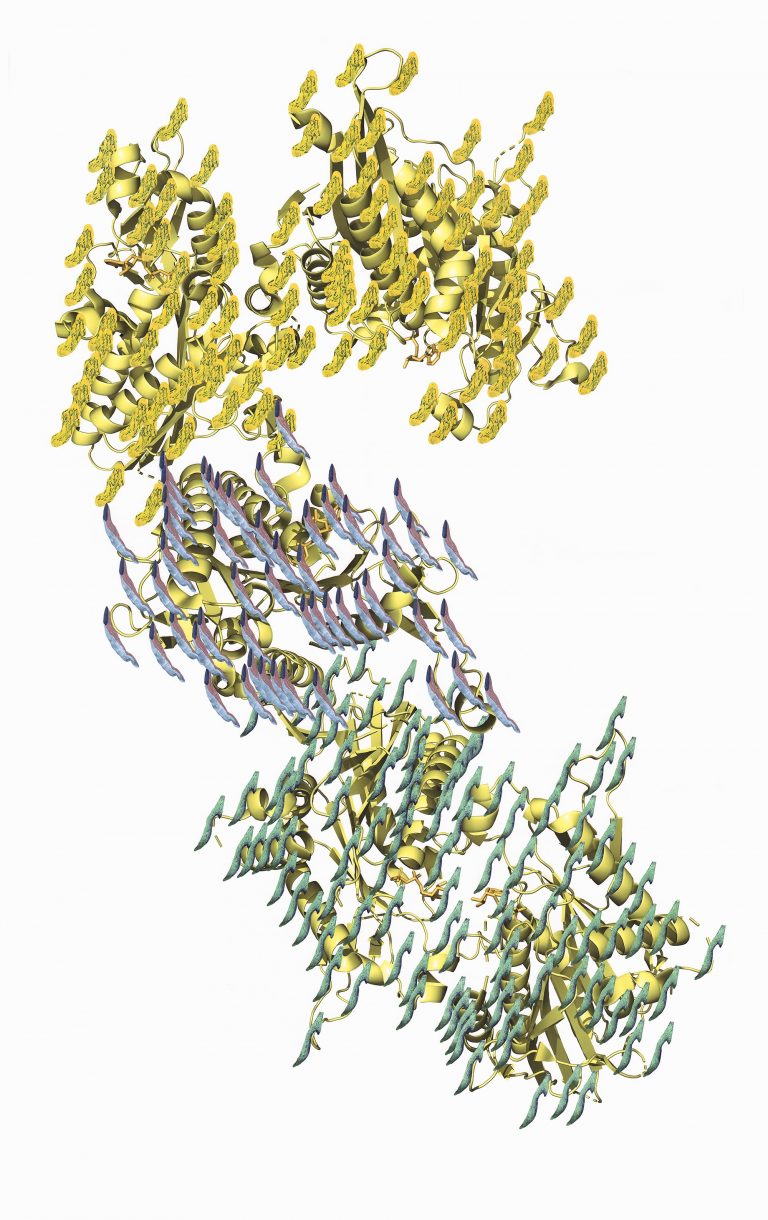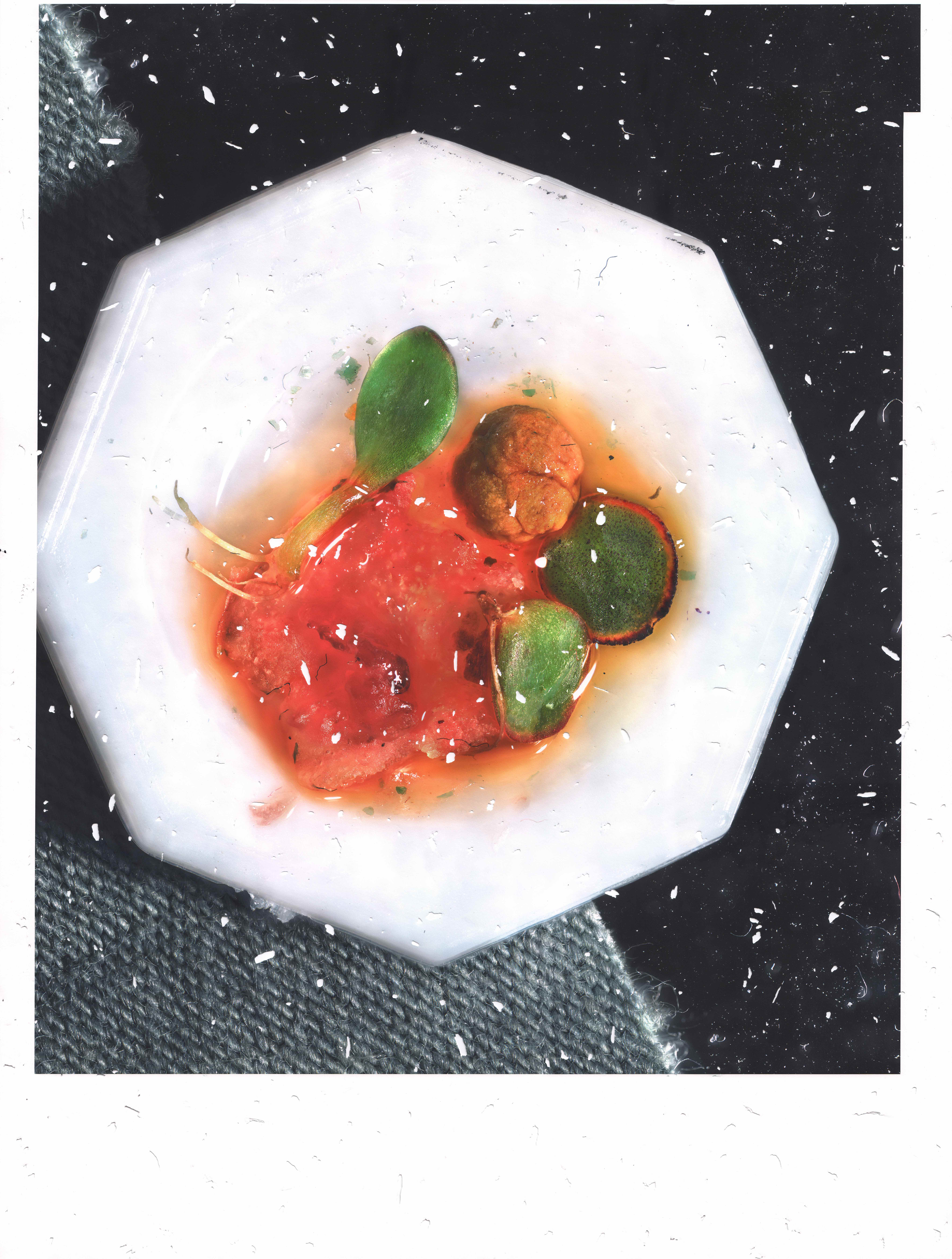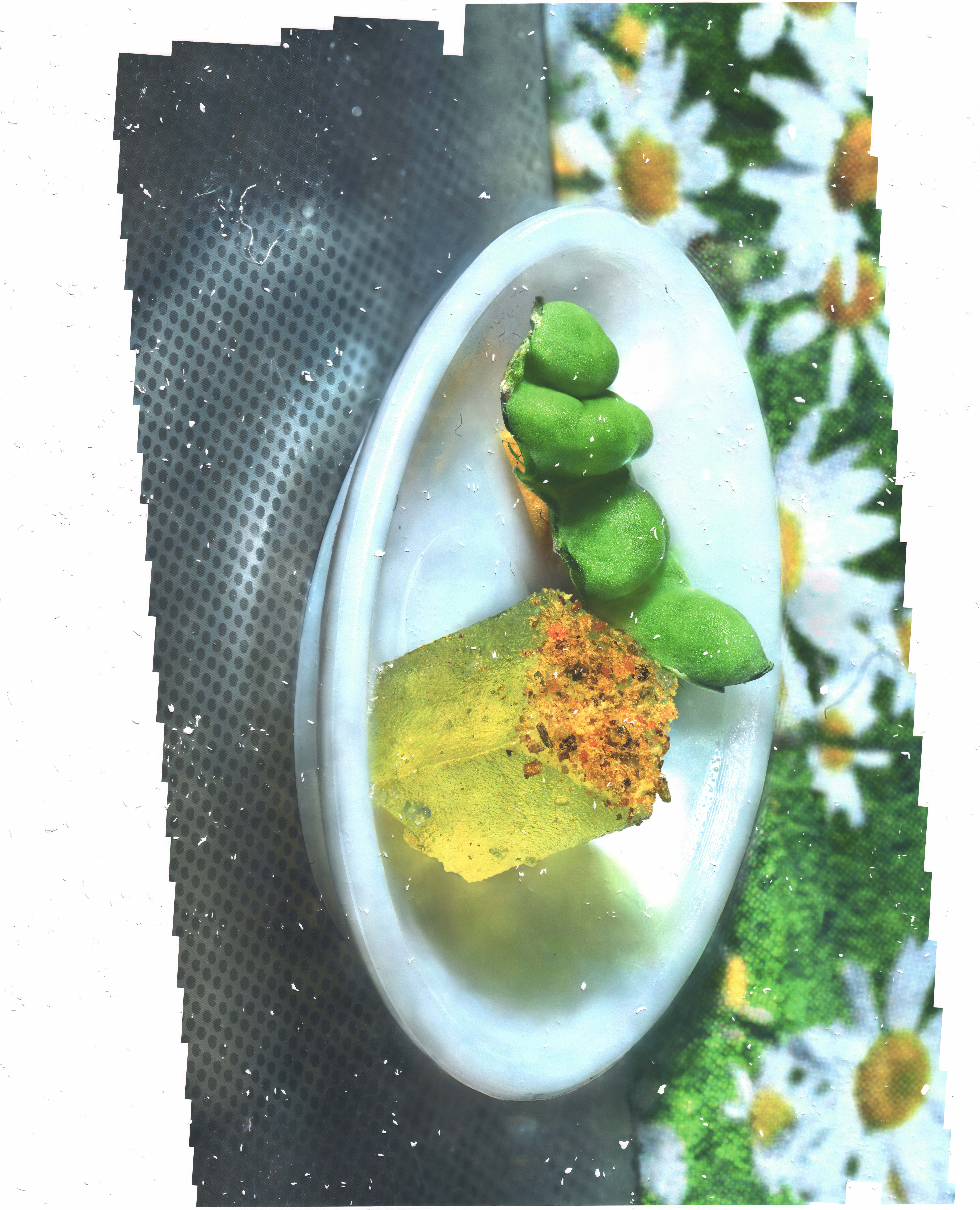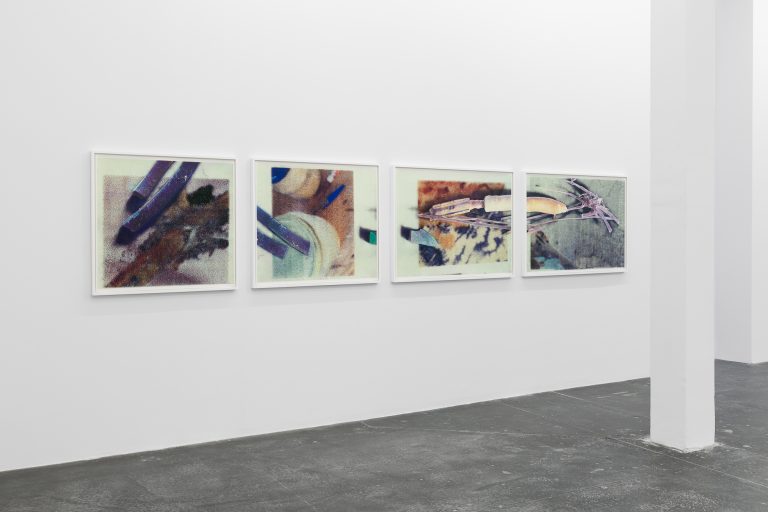11 Sep –
24 Oct 2020
Ran Zhang
Ran Zhang
“…I have been observing subjects under microscope for six years. This constant long term action has truly become a habit of mine, or a ritual towards ‘a melancholy about the universe itself”
Ran Zhang

Ran Zhang, Resolution of Traits 5.1, 2019, fictional objects wrap around the crystal structures of three human kinesin family members incomplex with ADP acrylic, watercolour, ink and pigment on inkjet print 180 x 112 cm [PDB ID:3B6U/3NWN/3B6V, Zhu,H., Shen,Y., Tempel, W., Landry, R., Arrowsmith, C.H., Edwards, A.A.,Sundstrom, M., Weigelt, J., Bochkarev, A., Park, H. (2007) Motor Domain of Human Kinesin FamilyMember 3B in Complex with ADP; (2010) crystal structure of the human KIF9 motor domain incomplex with ADP; (2007) motor domain of human kinesin family member 3C in complex with ADP]photo credit: Ran Zhang. Courtesy the artist and Plan B Cluj, Berlin
Combining painting, drawing, printing and photography, Ran Zhang’s work builds up images through layering these techniques, and constantly reworking the layers.Through this process she is interested to shuffle and reverse the roles of content, form and technique, to create a ‘super image’ that functions as an interface, where the process is not finalized into form and the subject is not finalized into content. The image remains open and keeps questioning itself, rather than creating an illusion or narration. The intention is to highlight the relation between our drive to create images, which at the same time shape us.
Ran Zhang’s recent process is based on photographing arrangements of objects frame by frame with a microscopic camera, and subsequently digitally rendering those frames into single images. The result is the only way to see the assembly as a whole. This process emphasizes the act of making an image and thereby speaks about its necessity. The textures and details that arise from this process distort the larger whole, and thereby take away our ability to identify what is shown, forcing the objects to lose their meanings and remain only materials to construct an image.

Ran Zhang, Chiral(1), 2017-18, punched holes on inkjet print of 100 times magnified miniature food setting120 x 91 cm. Photo: Ran Zhang. Courtesy the artist and Plan B Cluj, Berlin

Ran Zhang, Chiral(3), 2019, punched holes on inkjet print of 100 times magnified miniature food setting120 x 91 cm. Photo: Ran Zhang. Courtesy the artist and Plan B Cluj, Berlin
In her practice, the constant observation of microscopic subjects turns the action of seeing into a content of its own, a behaviour, or a ritual. It develops into a sense of self awareness of the biochemical body that makes this process possible. Her new work stencils the visualization of reality beyond the visual threshold. It uses knowledge – the replacement of direct experience of the invisible – to synthesize an ‘emotional’ reaction in the formation of an image.

Ran Zhang, Natritine Gaze 2 (part 5-8), 2016, inkjet print, 4 color silkscreen print, acrylic, watercolor, pigment and ink on paper. approx. 85 x 89 cm (each). Photo: Ran Zhang. Courtesy the artist and Plan B Cluj, Berlin
